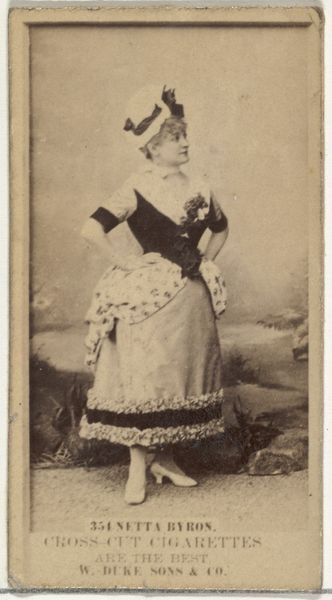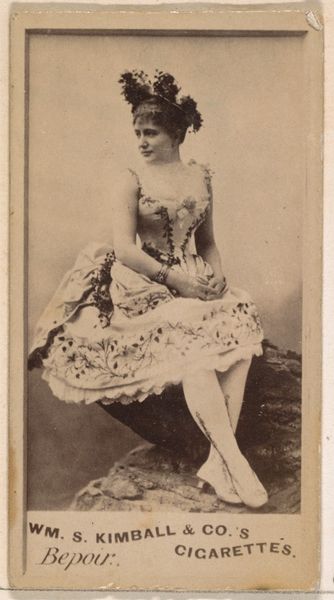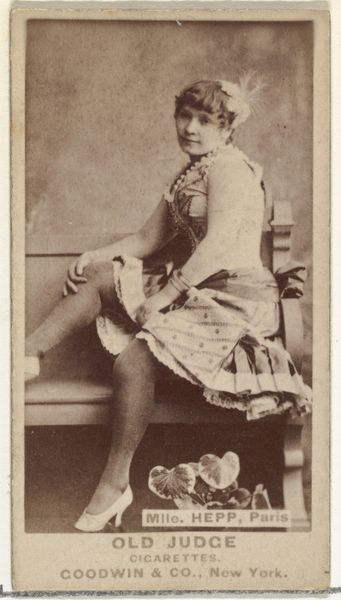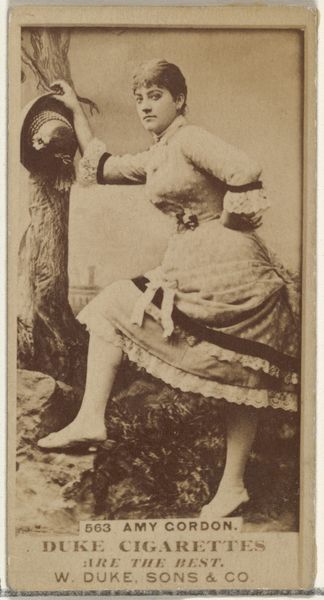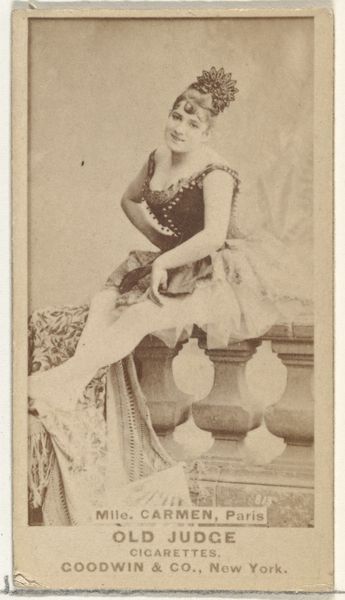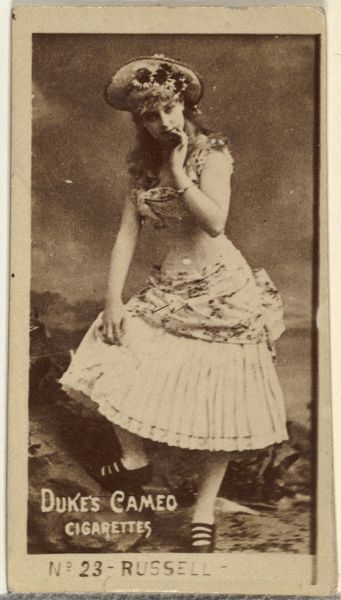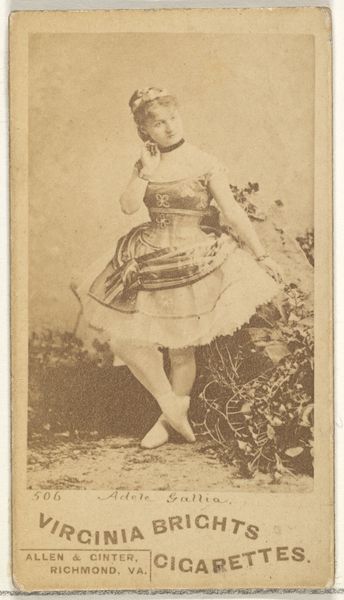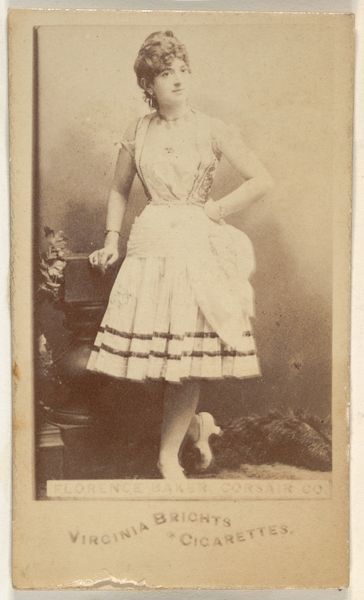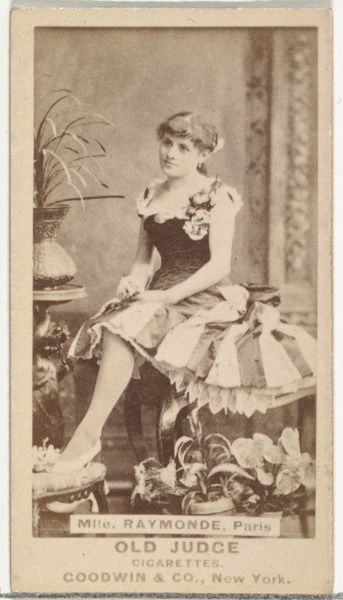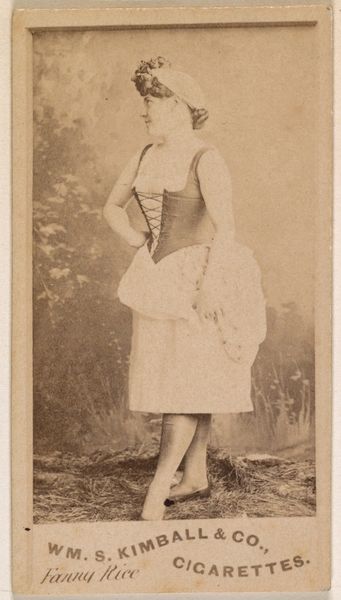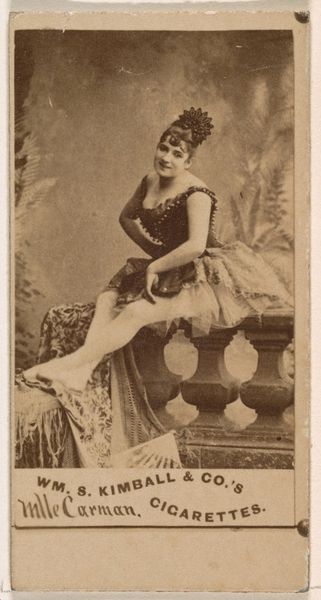
Card Number 194, Rosine Roski, from the Actors and Actresses series (N145-5) issued by Duke Sons & Co. to promote Cameo Cigarettes 1880s
0:00
0:00
drawing, print, photography
#
portrait
#
drawing
# print
#
figuration
#
photography
Dimensions: Sheet: 2 11/16 × 1 3/8 in. (6.8 × 3.5 cm)
Copyright: Public Domain
Editor: So this is "Card Number 194, Rosine Roski," a photograph from the 1880s produced by W. Duke, Sons & Co. as an advertisement. I’m struck by the sort of staged theatricality of it all; it feels less like art and more like…well, marketing! What do you make of it? Curator: Precisely! It's crucial to examine the material conditions of its creation. This isn't just a portrait; it's a mass-produced commodity, designed to be collected and consumed. The "art" here serves the explicit purpose of selling cigarettes. Editor: That's fascinating. I hadn't considered the sheer volume. Curator: Think about the labor involved: the photographer, the printers, the workers in the cigarette factories, and even Rosine Roski herself, an actress whose image is being used as a promotional tool. All of them are part of this vast production process. It highlights the intersection of art, commerce, and the evolving nature of work during the Industrial Revolution. What about the materials used – the paper, the ink? Editor: I guess it’s easy to overlook the obvious, but it definitely reframes how one should see it. The mass-produced nature, it devalues the artistry somehow… Curator: Or, it *redefines* it. We must rethink traditional ideas about art's "aura" and uniqueness. The value here lies in its distribution and how it permeates everyday life, becoming a tool for shaping consumer culture. And the fact that it exists in a museum collection now, further blurs the boundaries, doesn't it? Editor: Absolutely. I'm now wondering about all the other cigarette card series from that time and how it reflects what those consumers thought of labor and entertainment. It’s not high art, but it’s certainly revealing! Curator: Exactly. It’s a perfect example of how studying the material aspects can give new insights into art, commerce, and society.
Comments
No comments
Be the first to comment and join the conversation on the ultimate creative platform.
